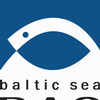Hawai'i’s scientists, manufacturers, cattle, swine and poultry farmers, and local agriculture and aquaculture farmers are rallying behind a proposed pilot-scale research feed mill planned by Oceanic Institute (OI). OI, an affiliate of Hawaii Pacific University, is requesting a Grant-in-Aid from the State to complete the building of the facility in Hilo, on the Big Island of Hawaii.
Oceanic Institute has stressed that it has no intention of competing with commercial feed mills or feed suppliers currently serving Hawaii’s farmers, rather it aims to develop research feeds that will create new markets and or to improve current feeds, explained Bruce Anderson, President of the Waimanalo, Oahu-based aquaculture research Institute. Once built, the facility will allow Oceanic Institute to bridge the gap between basic and applied research with commercial application. The facility will enable commercial-scale demonstration trials of prototype aquaculture systems, versus small-scale laboratory trials.
Two state senators from the Big Island have weighed in on the issue. "A research feed mill in Hilo could open endless possibilities for our state's agricultural industries," said State Sen. Lorraine Inouye (D-Hilo, Honokaa, Laupahoehoe, Hamakua, Waiakea Uka, Keaukaha, Waimea). "Developing technology to convert our farming and ranching by-products into feeds for our various farming and aquaculture industries could also generate local job opportunities and help this fragile sector keep down costs."
“Oceanic Institute’s plan for a research feed mill in Hilo presents a unique opportunity for our state,” State Sen. Russell Kokubun (D-Puna, Ka‘u, Volcano) added.
According to Oceanic Institute lead research scientist Warren Dominy, Ph.D., “When completed, the pilot-scale aquatic and terrestrial feeds facility would allow Oceanic Institute to research and test effective feed ingredients and develop formulations for cost-effective and Island-based feeds to maintain and improve currently farmed animals and to develop feeds for new animal species that can be cultured or farmed.”
The plan is to establish Hawaii as a world leader in aquatic and terrestrial feed science and technology and to give Hawaii- and U.S.-based farmers access to the latest technological advances in feed, help them increase their profit margins, and give them a significant competitive advantage in the world market.
“The facility is also designed to help bring these new technologies to market by transferring them to the private sector for commercialization,” said Dominy. “The facility will also allow for new research in using waste from Hawaii-grown agricultural products—like pineapple, papaya and macadamia nuts—to create cost-effective new feed ingredient sources.”
At present, Oceanic Institute has five containers on site at the UH Panaewa Farm with about $1 million in equipment for the mill and five more containers waiting to be shipped if funding is obtained. There is $3.7 million raised and another $4 million is required to complete the mill. Once fully funded, OI would move forward with this project that is modeled after the highly successful terrestrial research feed mill laboratory at the Kansas State University, Grain Science and Industry Department.
Carl Tanaka, general manager of Island Commodities, a division of Baker Commodities, Inc., said the feed mill could develop and test feeds for valuable aquatic species such as shrimp and large finfish, as well as land animals. He said demand for these feed ingredients would sustain the industries that produce them. And that means jobs.
“With the pending closure of yet another agricultural entity like Del Monte, and the increasing costs of shipping goods and services to and from our island State, it becomes vital to seek out new ways to stimulate Hawaii’s economic diversity and growth,” said Tanaka “The construction of the research feed mill would help in recycling and creating new value-added uses for currently available agricultural and animal products and byproducts such as wheat mill run from flour milling, mac nut cake, bagasse, and rendered slaughterhouse waste which we produce and recycle as fertilizer.”
Gordon Grau said he supports the project because he said a feed mill would greatly enhance the ability of researchers around the state to collaborate in undertaking studies that would have direct benefit to aquafarmers and consumers.
“The development of feeds that are environmentally appropriate and economically efficient, is significantly constrained by the lack of a feed mill facility,” Grau said. “If the use of Hawaii’s agricultural byproducts can be demonstrated to be viable feed ingredients by the efforts of the research feed mill, then it may also be possible to use this information to attract a commercial feed manufacturer to Hawaii—thereby providing additional rural jobs and financial benefits to the state.”
According to Dean Okimoto, president of the Hawaii Farm Bureau Federation, the specific benefits to Hawaii's aquaculture industry would include enabling the research and development of diets to meet the nutritional needs of Hawaii's unique aquaculture species grown in our largely unique tropical to subtropical growing conditions.
“As feed costs often constitute the largest single operational expense of Hawaii's aquaculture producers, the research and development of more efficient and productive diets hold the potential to be of major importance in keeping our industry competitive in the face of market globalization,” Okimoto said. “If the use of Hawaii's agricultural byproducts can be demonstrated to be viable feed ingredients by the efforts of the Research Feed Mill, then it may also be possible to use this information and the demonstrated feed manufacturing technologies to attract a commercial feed manufacturer to Hawaii, thereby providing additional rural jobs and financial benefits to the State.”
And that’s part of the goal for this research feed mill. At Oceanic Institute, the transfer of technology it has developed is one of its key goals. As OI builds up its database of potential products and byproducts indigenous to the Pacific Basin that can be used in island animal feed economies, it also expands its current commercial regional markets by using those indigenous products, and in turn supporting farmers through the development of feeds for new species cultured in Pacific Basin communities.
“The potential for developing and using local by-product ingredients in feeds could help counter the downsizing trend in the Hawaii livestock industry that is caused by the high cost of imported feed and feed ingredients,” said James Carpenter, Ph.D., of the Department of Human Nutrition, Food and Animal Sciences at University of Hawaii at Manoa’s College of Tropical Agriculture and Human Resources. “With a fully funded facility, locally available ingredients could be researched and developed to supplement premixes currently being imported. This would be a definite economic benefit for both producers and the state of Hawaii.”
Hawaii’s current annual feed usage for the livestock industries is estimated to be valued at more than $28 million. The cost of specialized feeds for aquaculture farming of shrimp and other marine animals can account for almost half of those production costs. For terrestrial animal feeds, costs can account for up to 70 percent of total production costs. The development of the research feed mill would allow expanded research to include using existing agricultural waste products and other food industry by-products in animal feed formulations, such as those generated by the sugar, pineapple, macadamia, papaya, bananas and coconut industries. By-products from diversified agriculture crops, the animal rendering industry, and food manufacturers such as flour mills alsocould be incorporated as economically efficient sources of plant and animal proteins for use in livestock and aquaculture feeds. According to Carpenter, by-products such as molasses and wheat mill run are not being used effectively as livestock feeds here in Hawaii but are being shipped back to the mainland for sales there.
Kevin Hopkins, Interim Director of the Pacific Aquaculture and Coastal Resources Center and Professor of Aquaculture within the College of Agriculture, Forestry, & Natural Resources and professor of agriculture at the University of Hawaii-Hilo said: “The lack of low-cost feeds is a severe impediment to profitability in both the livestock and aquaculture industries here in Hawaii. Our mechanism to reduce feed costs is to utilize local agricultural products and byproducts within our feeds.
“But feed mills and labs on the mainland are not really interested in developing feeds which utilize those agricultural byproducts unique to us. We need a facility in Hawaii to do that,” Hopkins said. “Further, we need a facility in Hawaii to train people in the development and manufacturing of feeds suited to the tropics and subtropics. As this project is located on the UH-Hilo farm, this provides a real opportunity for training our students.”













